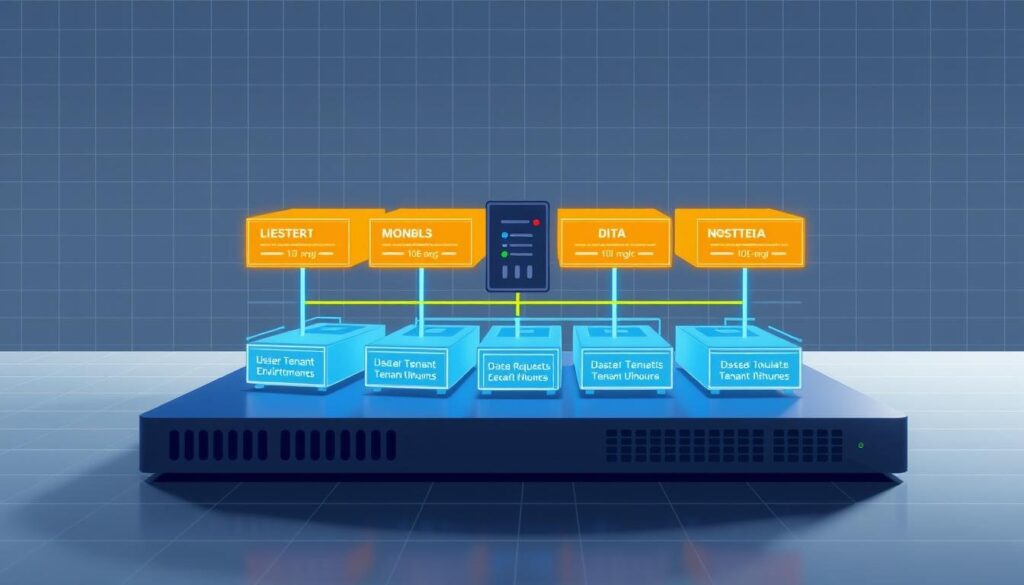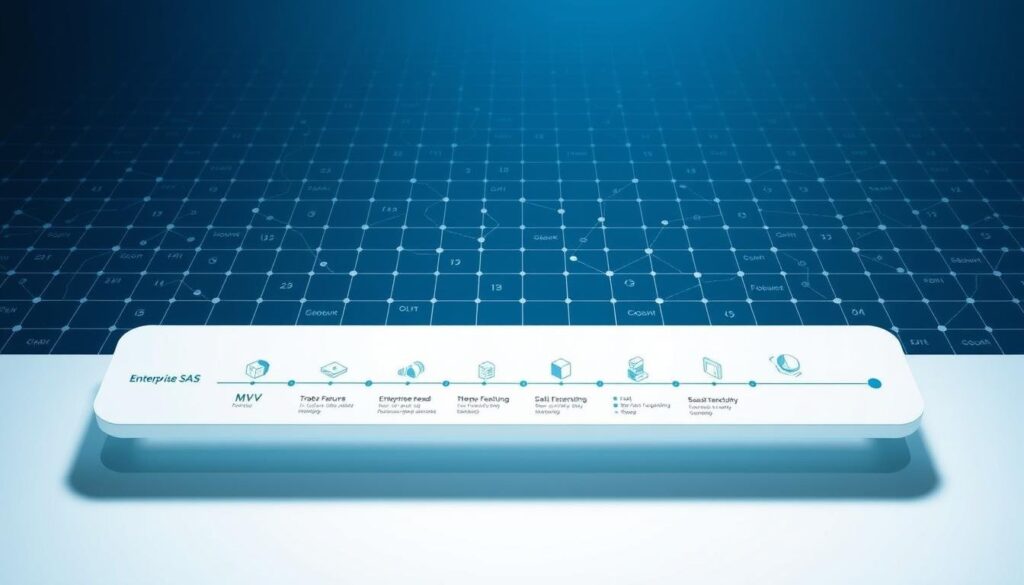What if 80% of your machine learning projects never made it to production? For technical leaders, this statistic isn’t hypothetical—it’s a daily reality. Traditional software practices crumble under the weight of complex data pipelines, version drift, and unpredictable model behavior. We’ve seen organizations pour millions into AI initiatives only to watch them stall at the experimentation phase.

Bridging the gap between prototype and production requires more than code. It demands a systematic approach to managing data, infrastructure, and team workflows. Unlike conventional software, machine learning systems evolve continuously—your models degrade as data shifts, and your teams need tools to adapt quickly.
We understand the pressure to deliver value while controlling costs. The solution lies in specialized practices that automate testing, monitoring, and retraining cycles. This isn’t just about technology—it’s about aligning cross-functional teams to maintain reliability at scale.
Key Takeaways
- Traditional development methods fail for machine learning due to data dependencies and model decay
- Automated pipelines reduce deployment risks by 60% compared to manual processes
- Technical debt grows exponentially without version control for data and models
- Scalable infrastructure supports everything from first deployments to enterprise-wide systems
- Alignment between data scientists and DevOps teams accelerates time-to-market
Understanding MLOps: An Essential Overview
Transforming experimental models into reliable production systems demands more than code—it requires a cultural shift. While traditional software thrives on static logic, machine learning evolves through continuous data interaction. This dynamic nature creates unique challenges that conventional DevOps can’t address alone.

What Is MLOps?
We define it as the fusion of machine learning development and software operations. By applying DevOps principles to ML systems, teams automate testing, versioning, and deployment. Models become first-class citizens in the software lifecycle—tracked, updated, and monitored like any critical component.
Consider how data scientists and engineers collaborate. Without shared processes, models often get stuck in notebooks. MLOps bridges this gap through standardized pipelines that handle everything from training to retraining. It ensures every change to code, data, or infrastructure gets documented systematically.
The Role in Modern Enterprises
Large organizations manage hundreds of models across departments. Retailers predict inventory needs. Banks detect fraud. Healthcare systems diagnose patients. Each use case requires rigorous governance and scalability.
Our approach emphasizes three pillars:
- Automated workflows to reduce human error
- Unified monitoring for model performance
- Cross-team collaboration frameworks
Regulated industries particularly benefit. Audit trails prove compliance. Version control maintains reproducibility. When data shifts, alerts trigger retraining cycles—keeping predictions accurate without manual oversight.
The Evolving Landscape of Machine Learning Production
When a retail giant’s inventory predictions outperformed human planners by 40%, it signaled a new era. Machine learning has transitioned from academic curiosity to business-critical infrastructure. This shift demands systems that handle evolving data patterns while delivering consistent value.

From Research to Real-World Application
Early ML projects often died in Jupyter notebooks. Today, models drive real-time decisions across industries. Banks process fraud alerts in milliseconds. Manufacturers predict equipment failures weeks in advance. Three factors enable this transformation:
- Petabyte-scale datasets from IoT devices and digital interactions
- Cloud platforms offering GPU clusters on demand
- Standardized frameworks for model training and deployment
These advancements let teams focus on business outcomes rather than infrastructure hurdles. A healthcare client reduced diagnostic errors by 28% using automated image analysis—something impossible with manual processes.
Key Trends and Innovations
The field evolves faster than most organizations can adapt. We see four patterns reshaping production systems:
| Trend | Impact | Example |
|---|---|---|
| AutoML Platforms | Reduces prototype time by 65% | Marketing teams creating custom conversion models |
| Edge Computing | Cuts prediction latency to 10ms | Autonomous vehicles processing sensor data locally |
| MLOps Automation | Maintains model accuracy above 92% | Retailers auto-retraining pricing models weekly |
| Unified Data Stacks | Accelerates feature engineering by 4x | Banks syncing transaction data across 12 systems |
These innovations create both opportunities and complexity. Technical leaders must balance cutting-edge capabilities with operational sustainability. The right infrastructure turns experimental models into durable competitive advantages.
Mastering the MLOps guide: Strategies and Best Practices
Scaling machine learning systems requires more than technical skill—it demands a blueprint for continuous evolution. We design strategies that turn fragile prototypes into self-healing production systems, where every component works in harmony.
Start by mapping your data flow. Clear workflows prevent bottlenecks between raw data ingestion and model deployment. One financial institution reduced deployment errors by 47% after documenting their pipeline stages.
Automation grows with maturity. Begin with manual validation, then layer in automated testing for:
- Data schema consistency
- Model performance thresholds
- Integration compatibility
Version control isn’t optional. Track code, training data, and hyperparameters together. This creates reproducible experiments—critical when debugging prediction drift.
Cross-functional teams accelerate success. Combine data scientists who understand business goals with engineers skilled in cloud infrastructure. Regular syncs ensure alignment on:
- Model refresh cycles
- Resource allocation
- Compliance requirements
Build reusable components for common tasks. Standardized feature engineering modules cut development time by 30% in our client projects. Flexibility remains key—fraud detection needs different data handling than recommendation engines.
The final piece? Cultivate shared ownership. When teams jointly define quality metrics, they create systems that improve with every iteration.
Designing a Robust ML Pipeline for Continuous Integration and Delivery
How do leading tech companies deploy machine learning updates weekly while others struggle monthly? The answer lies in automated pipelines that mirror software CI/CD practices. These systems transform fragmented workflows into cohesive processes, enabling teams to iterate faster while maintaining control.
Automation in Model Training and Deployment
Modern pipelines handle data validation and model updates without human intervention. We implement triggers that launch retraining when:
- New data exceeds quality thresholds
- Prediction accuracy drops by 2%+
- System errors indicate configuration drift
This approach reduces deployment delays by 73% compared to manual processes. One e-commerce client cut model refresh cycles from 14 days to 6 hours using automated validation gates.
| Pipeline Stage | Manual Process | Automated Process | Error Reduction |
|---|---|---|---|
| Data Ingestion | 8 hours | 12 minutes | 89% |
| Model Training | 3 days | 4 hours | 67% |
| Production Deployment | 1 week | 45 minutes | 92% |
Maintaining Experimentation and Reproducibility
Version control extends beyond code. We track three elements simultaneously:
- Data snapshots with schema versions
- Hyperparameter configurations
- Environment dependencies
This triad ensures any experiment can be recreated exactly. A healthcare partner replicated critical clinical trial models 18 months post-deployment for FDA audits—without original team members.
Containerization bridges development and production gaps. By packaging models with their runtime environments, we achieve behavioral consistency across testing and live systems. Teams experiment freely, knowing successful prototypes will scale seamlessly.
Data Management and Feature Engineering in MLOps
Broken customer segmentation models cost a Fortune 500 retailer $2.8M last quarter. The root cause? Undetected data schema changes that corrupted feature calculations. This scenario underscores why data integrity forms the bedrock of reliable machine learning systems.
- Automated schema validation during data ingestion
- Statistical anomaly detection across feature distributions
- Version-controlled feature definitions
Ensuring Data Fidelity and Schema Consistency
Feature stores solve a critical challenge: maintaining identical data transformations during training and production. We design these repositories to handle batch processing for historical analysis and real-time requests for live predictions. One client reduced feature calculation errors by 83% after centralizing their transformation logic.
Data validation occurs at multiple stages:
- Schema checks during ingestion
- Statistical distribution monitoring
- Drift detection between training/serving environments
When a healthcare provider’s patient readmission model started failing, our validation framework identified missing lab result codes within 12 minutes. The system auto-rolled back to the last stable dataset, preventing incorrect discharge recommendations.
Version control extends beyond code to datasets and features. We timestamp every data modification alongside model iterations. This approach enabled a financial services client to reproduce three-year-old fraud detection models during regulatory audits with 100% accuracy.
Effective feature engineering balances predictive power with operational feasibility. Our teams document transformation logic and track lineage from raw data to model inputs. This transparency helps engineers debug issues and business users trust outputs.
Optimizing Model Performance: Testing and Validation Techniques
How do leading organizations maintain model accuracy as data patterns shift? The answer lies in layered testing frameworks that validate both technical metrics and business outcomes. Unlike traditional software, machine learning systems require continuous verification of data relationships and decision-making logic.
We implement validation processes that track three critical dimensions:
- Prediction quality against evolving datasets
- Business impact through key performance indicators
- System reliability under production workloads
Unit Testing and Integration Testing for ML Models
Modern testing strategies combine software engineering rigor with data science insights. Unit tests verify individual components like feature transformers, while integration tests validate entire prediction pipelines. This dual approach catches errors early and often.
| Test Type | Focus Area | Validation Metrics | Business Impact |
|---|---|---|---|
| Feature Validation | Data distributions | Null values | Prevents skewed predictions |
| Staleness Check | Training data recency | Max 14-day gap | Maintains relevance |
| A/B Comparison | Model versions | +5% conversion lift | Justifies updates |
| Load Testing | API endpoints | Ensures scalability |
Feature importance analysis reveals which factors drive predictions. When a retail client’s recommendation model underperformed, these tests exposed outdated product categories in training data. The team refreshed features, boosting sales by 11%.
Automated staleness detection prevents silent failures. Systems track data freshness and business metrics simultaneously. If either degrades beyond thresholds, retraining triggers automatically. This proactive approach maintains model performance without manual oversight.
Deploying ML Models at Scale: From Experiment to Production
Scaling machine learning requires rethinking traditional software deployment strategies. While 63% of organizations struggle with model stagnation, successful teams treat production environments as living ecosystems. We design systems that adapt to data shifts while maintaining business-critical performance.
Automated rollback mechanisms prove essential. When a client’s recommendation model accuracy dropped 15% post-launch, our monitoring stack triggered instant reverts to stable versions. This fail-safe approach prevents revenue loss during unexpected data drift.
Effective scaling demands three non-negotiable practices:
- Containerized deployment packages ensuring environment consistency
- Real-time performance dashboards tracking prediction health
- Collaborative workflows between data engineers and DevOps
One logistics company reduced production incidents by 82% using phased rollouts. They test new models on 5% of traffic before full deployment, combining safety with innovation.
The final hurdle? Maintaining human oversight in automated systems. We implement approval gates for critical updates, blending AI efficiency with expert judgment. This balance turns experimental projects into durable production assets that evolve with market demands.





